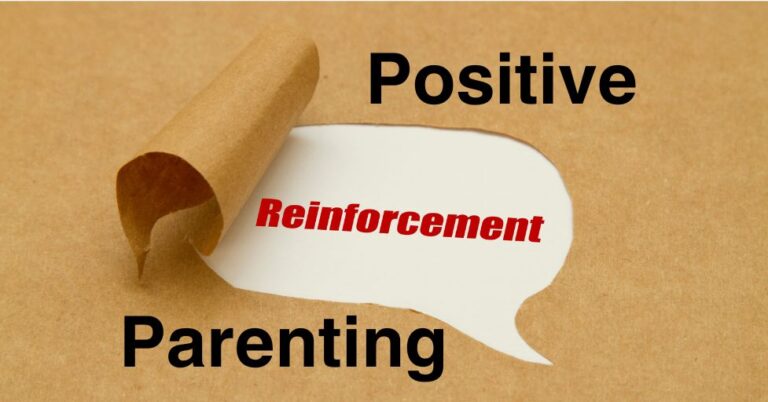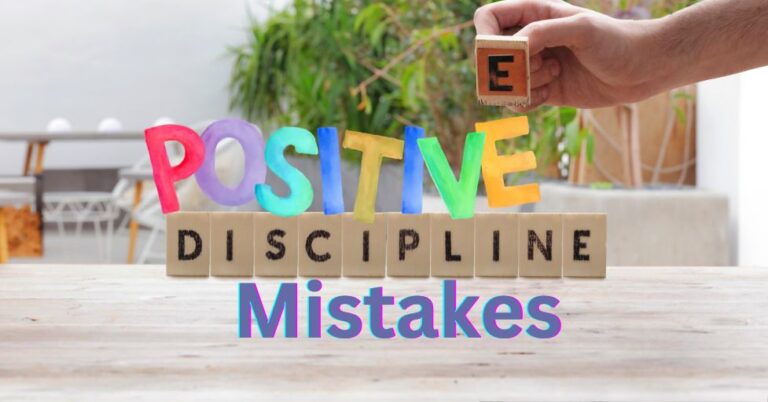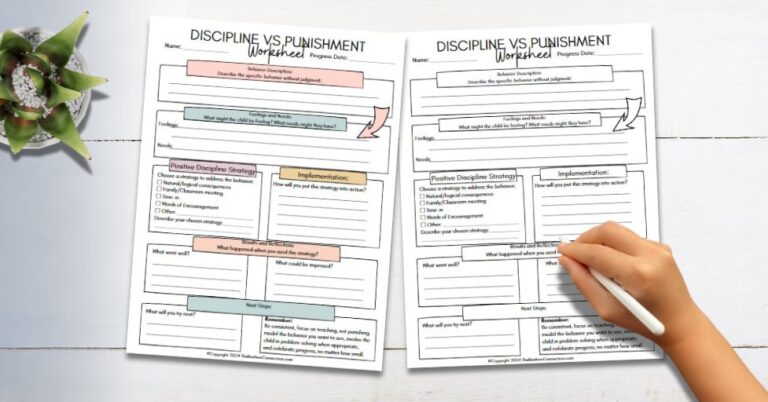Powerful Alternatives to Yelling for Calmer Parenting
Disclosure: This post may contain affiliate links, meaning I may get a small commission if you decide to make a purchase through my links, at no cost to you.

Powerful Alternatives to Yelling can seem elusive when you’re in the heat of a parenting moment.
Let’s face it, as parents we’ve all been there…the frustration builds and before we know it, our voices have escalated. Imagine this: It’s a Saturday morning, and your family is ready for a peaceful breakfast. Dad is making pancakes while you are enjoying a rare moment of quiet with a game of Wordle. Suddenly, a syrup showdown ensues between your two sons, who are determined to see who can make the biggest pancake tower.
Related:
How to get a teenager to talk about their feelings.
5 Ways to motivate kids to get things done
As syrup drips everywhere, you feel your patience wearing thin. The dog, decides this is the perfect time to jump up on the counter, knocking over a glass of orange juice. Dad’s face turns a shade of red that matches the strawberries on the table. Dad and you start to yell at the dog, and the boys. The kitchen table is a complete disaster!
But the guilt that follows is almost palpable. Is there a better approach?
I’m here to tell you – yes! There are indeed Powerful Alternatives to Yelling.
Table of Contents:
- The Consequences of Yelling at Your Kids
- Why Doesn’t Yelling Work?
- Powerful Alternatives to Yelling
- When Mommy’s Feeling Angry – Dealing with Parental Emotions
- Powerful Alternatives to Yelling for Calmer Parenting
- Creating A Happier Family Environment
- FAQs about Powerful Alternatives to Yelling
- Conclusion
The Consequences of Yelling at Your Kids
At times, we all experience the frustration of being a busy parent.
You’re a busy parent trying to balance work, and home and the kids won’t listen.
Your patience is running thin and before you know it, you’re yelling – but does this really help?
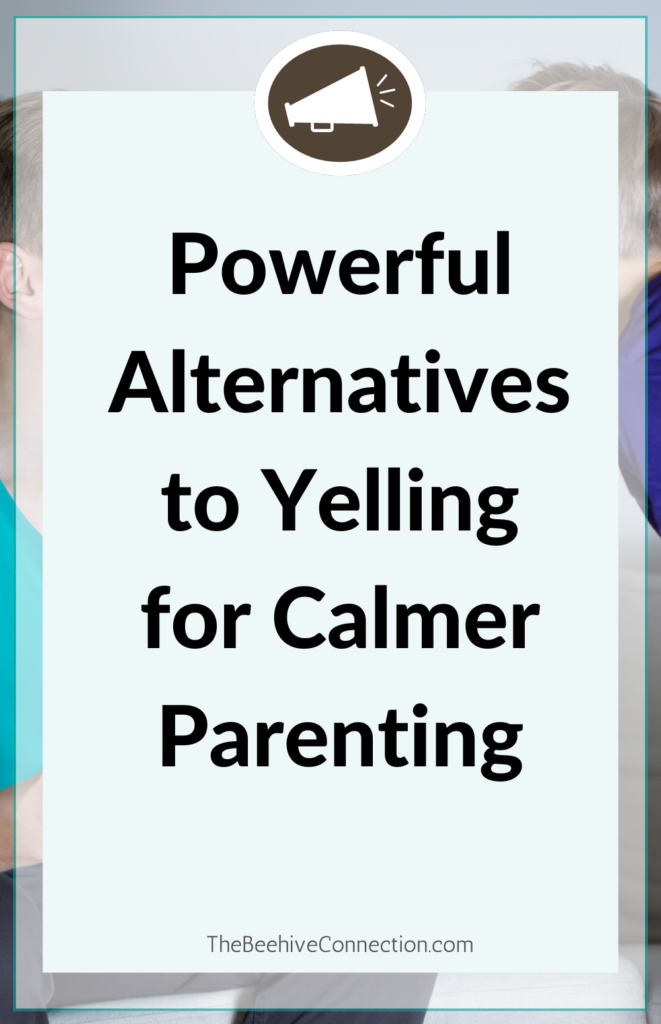
Understanding The Impact on Child’s Behavior
A momentary lapse can have long-term effects on your child’s behavior, leading them to tune out when parents raise their voices.
Related:
Tips for teaching teens responsibility
Dealing with an out-of-control teenager
Taming tantrums from toddlers to teens
Making Things Worse Instead Of Better?
Surprisingly enough, frequent yelling might be making things worse instead of better, but it could also potentially increase these behaviors.
Becoming A Mad Parent And Its Effects On Family Dynamics
- Prolonged exposure to loud noises can lead to an unhealthy family environment where everyone seems perpetually angry or upset.
- This cycle creates what some experts call a “mad parent” scenario which has negative impacts on both adults’ mental health as well as children’s emotional development.
So next time if you find yourself losing control over your temper, remember: shouting isn’t always the answer. It’s crucial for us as parents to understand how our actions affect our little ones’ perceptions about themselves, others around them – even life in general. In the following section, we will explore why exactly doesn’t yelling work. How come despite its immediate satisfaction (let’s admit), it fails so miserably in achieving desired results? Stay tuned.
Why Doesn’t Yelling Work?
You’re at your wit’s end, the kids won’t listen and you feel like a mad parent. You raise your voice hoping to get their attention but does it really work? Let’s delve into why yelling often backfires.
Related:
10 Best Ways to Connect With Your Teens
How to Talk to Your Kids so They Will Really Listen
Yelling Amplifies Bad Behavior
Raising our voices might seem like an effective way to discipline kids when they’re not listening or engaging in common trigger behaviors. Nevertheless, investigations point to this method potentially having an adverse effect instead of a positive one. Research shows, for instance, that children who are frequently yelled at tend to develop more aggressive behavior over time.
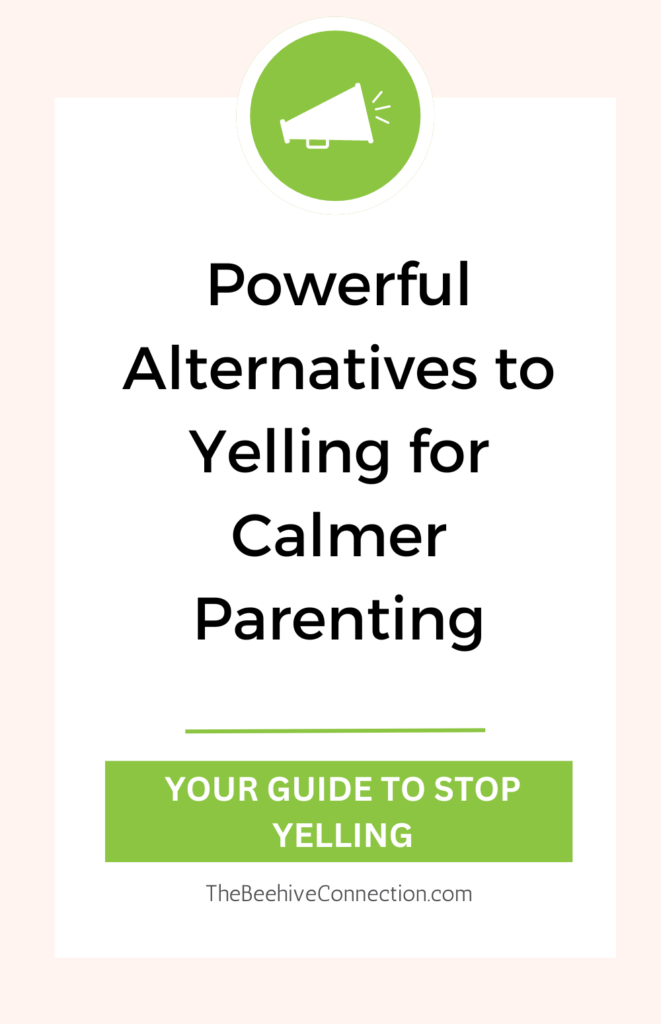
The Vicious Cycle of Yelling
If we keep on yelling every time our child exhibits bad behavior, they may start associating these outbursts with normal communication patterns. This can lead them to become desensitized – meaning they stop paying closer attention when you’re raising your voice because it has become commonplace. Studies indicate that repeated exposure to high levels of parental anger reduces its effectiveness as a disciplinary tool over time.
Fueling Big Emotions Instead Of Understanding Them
Kids aren’t small adults – their brains are still developing which makes understanding big emotions quite challenging for them. When we yell instead of explaining what went wrong calmly and clearly, we risk overwhelming them emotionally without providing any real guidance about how to behave better next time.
This doesn’t mean parents should suppress feelings of frustration or anger altogether; rather, it suggests the importance of finding healthier ways to express those feelings and effectively manage stress while modeling good emotional regulation skills for children.
Related:
25 Words of Encouragement for Kids
Important Parenting Tools to Use This Year
Breaking The Cycle: A New Approach To Discipline
Are you ready to break the cycle and find alternative strategies for dealing with misbehavior? Stay tuned for the next section where we will explore powerful alternatives to yelling that can help create a happier family environment for everyone involved.
Why Yelling Doesn’t Work: Discover the negative effects of yelling on kids’ behavior and how it can create a vicious cycle. Understand the importance of understanding emotions instead of fueling them.
Breaking The Cycle: Learn effective discipline strategies to replace yelling for a happier family environment. Stay tuned for powerful alternatives.
Powerful Alternatives to Yelling
We all know that shouting isn’t effective, correct?
The challenge is finding powerful alternatives when your kids won’t listen.
Talking Softer as an Alternative
Ironically, talking softer can be a game-changer.
That this simple alternative grabs your child’s attention more effectively than raising your voice. Speaking calmly and quietly can foster better communication and stronger relationships between parents and children. When parents talk quietly, children are more likely to listen and respond positively because they do not feel threatened or scared.
According to experts from UConn Health, yelling is often more about releasing the parent’s frustration than constructively guiding the child’s behavior. It can make parents appear out of control, which can diminish their authority and effectiveness as caregivers.
Additionally, using a calm tone helps to model the type of behavior parents want to see in their children. Children who observe their parents managing their emotions calmly are better equipped to handle their own emotions similarly. Positive reinforcement and clear, calm communication can significantly improve a child’s response and cooperation.
For further reading and more in-depth insights on the topic, you can explore resources from UConn Today, Humanium, and The New York Times.
A whisper or calm tone surprises them into paying closer attention.
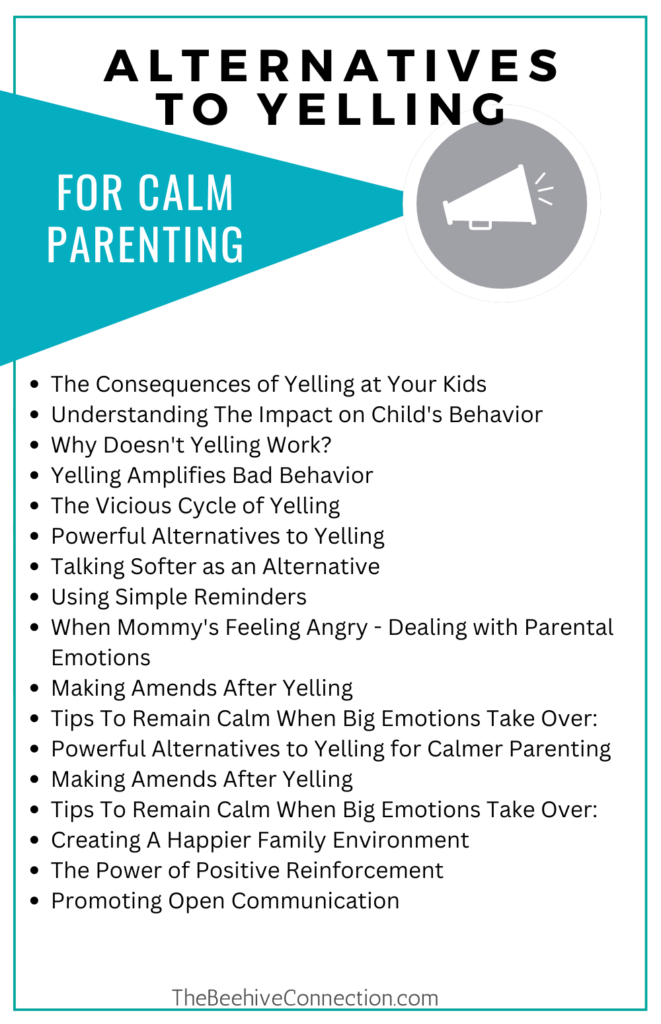
Using Simple Reminders
Sometimes children need guidance rather than reprimands for their bad behavior.
Consider using simple reminders. Imagine trading in your yelling megaphone for a subtle reminder bell—it’s like upgrading from a clunky old pager to a sleek smartphone. Simple reminders are the zen masters of parenting; they promote a calm, controlled atmosphere that encourages kids to actually hear and understand what you’re saying.
Instead of causing a meltdown, a gentle nudge helps kids remember their tasks without the drama. Picture this: instead of bellowing “Clean your room!” for the tenth time, you softly say, “Remember to tidy up your room before going to your friends house,” and watch as your child actually does it—without the eye rolls or door slams.
This technique gently steers them towards better choices without escalating big emotions.
Next up? Let’s tackle parental emotions.
When you’re feeling angry and on the verge of becoming a mad parent – what do you do?
Stay tuned for our next section where we delve into dealing with these challenging moments in parenting.
When Mommy’s Feeling Angry – Dealing with Parental Emotions
The kids won’t listen, the house is a mess, and you’re on your last nerve.
You can feel that familiar wave of anger rising within you. But what do we do when you’re feeling angry?
Making Amends After Yelling
Remember, everyone makes mistakes – even the most patient parents can lose their temper. everyone makes mistakes.
Even the most patient parents lose their cool sometimes.
But how we handle these moments can teach our children a powerful lesson about accountability and empathy.
- If you find yourself raising your voice in annoyance or anger towards your kid, take a few moments to get yourself together before speaking again.
- Acknowledge openly that you were wrong for yelling; this not only validates your child’s feelings but also models humility – an essential trait for personal growth.
- Sincerely apologize to show them that making amends after losing control is part of taking responsibility for one’s actions.
If you find yourself raising your voice in annoyance or anger towards your kid, take a few moments to get yourself together before speaking again.
TheBeehiveConnection.com
Tips To Remain Calm When Big Emotions Take Over:
- Breathe deeply: Deep breathing exercises are known to reduce stress levels instantly. Try inhaling slowly through your nose while counting up to five then exhale from mouth till count ten repeating as needed until calmer emotions prevail.
- Create A Timeout For Yourself: Just like kids need timeouts when they misbehave or get too worked up, adults could use some time out too. Find somewhere quiet where no distractions exist (like the bathroom) if possible so you can focus solely on calming thoughts instead of letting your mind wander towards things that might exacerbate the current situation even more.
- Distract Your Mind With Positive Thoughts Or Activities: Instead of focusing negatively on those aspects causing upsetness, try shifting your attention onto something else entirely such as doing small chores around the home or reading your favorite book or magazine. This helps break the cycle of negative thinking that often leads to increased tension, anxiety, and overall discomfort among individuals.
- Prioritize Self-Care: It may sound cliche, but the truth remains unchanged – “You cannot pour from an empty cup.” Ensure you are getting enough sleep, eating a balanced diet, and engaging in regular physical activity. These factors significantly influence your mood and ability to cope with stressful situations effectively without resorting to harmful coping mechanisms such as shouting or screaming at others, especially innocent little ones who depend on us for guidance, love, and care.
Powerful Alternatives to Yelling for Calmer Parenting
When parental emotions run high, it’s important to find effective alternatives to yelling. Take a moment to calm down and acknowledge your mistake. Apologize sincerely and teach your child about accountability and empathy.
Making Amends After Yelling
If you find yourself yelling in frustration or anger, take time to calm down before addressing your child again. Admit that you were wrong for yelling, validating their feelings and modeling humility. Sincerely apologize, showing them the importance of taking responsibility for one’s actions.
Tips To Remain Calm When Big Emotions Take Over:
- Breathe deeply: Inhale slowly through your nose while counting up to five, then exhale from your mouth until calmer emotions prevail.
- Create a timeout for yourself: Find a quiet space where distractions are minimal so you can focus on calming thoughts instead of exacerbating the situation further.
- Distract your mind with positive thoughts or activities: Shift attention away from negative aspects by engaging in small chores or reading a favorite book or magazine.
- Prioritize self-care: Get enough sleep, eat well-balanced meals, and engage in regular physical activity as these factors significantly influence mood and coping abilities without resorting to harmful behaviors like shouting at loved ones who depend on us.
Creating A Happier Family Environment
Moving away from the yelling cycle can be a game-changer for your family.
It’s not just about stopping bad behavior or getting kids to listen, it’s also about building stronger bonds and fostering respect within the household.
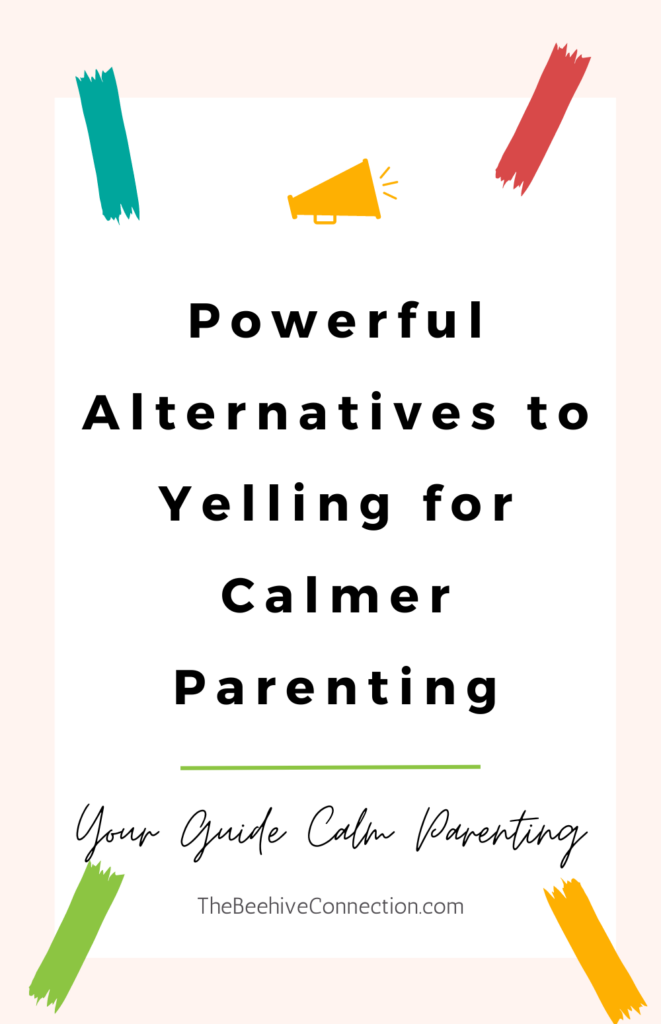
The Power of Positive Reinforcement
Rather than focusing on what they’re doing wrong, highlight when your child is behaving well. Imagine your kid as a garden and your words as water—positive reinforcement is like a magical fertilizer that turns a mere sprout into a flourishing sunflower. Instead of pointing out every weed (a.k.a. mistake), you highlight the blossoms (good behavior).
This approach doesn’t just make your kid feel good; it creates a blooming environment of trust and motivation.
For example, instead of scolding little Timmy for not finishing his homework, you praise his effort when he completes a math problem. Suddenly, homework isn’t a battlefield but a playground where achievements are celebrated. Positive reinforcement isn’t just about being nice; it’s about being smart. It builds confidence, encourages good habits, and makes parenting feel like a sunny day instead of a stormy night.
This method encourages good conduct without resorting to harsh disciplinary actions like yelling or punishment.
Acknowledge openly that you were wrong for yelling; this not only validates your child’s feelings but also models humility – an essential trait for personal growth.
TheBeehiveConnection.com
Promoting Open Communication
Talking softer instead of raising our voices opens up channels for better communication with our kids.
Avoid being a mad parent by encouraging open dialogue rather than enforcing strict rules through fear. Avoid being the household’s resident volcano by swapping fear-based rules for open dialogue. Instead of erupting with commands, try a gentle stream of conversation. Imagine your home as a peaceful roundtable rather than a battleground. Encouraging open dialogue transforms you from the dreaded warden into a wise sage.
Kids who feel heard are more likely to follow rules willingly because they understand the “why” behind them. This approach doesn’t just keep your blood pressure down; it builds trust and respect. So, ditch the iron fist and embrace the velvet glove—your household harmony will thank you.
Open dialogue in parenting involves creating a two-way conversation where both parents and children feel heard and respected. Here’s an example:
Scenario: Your teenager missed curfew.
Traditional Approach (Fear-Based Rules): Parent: “You’re late again! You’re grounded for a month! Why can’t you just follow the rules?”
Open Dialogue Approach:
Parent: “I noticed you came in past curfew tonight. Can we talk about what happened?”
Teen: “I’m sorry. We lost track of time at Jake’s house. I didn’t mean to be late.”
Parent: “I understand that can happen. However, it’s important for you to be home on time so we know you’re safe. What do you think would help you remember to check the time next time?”
Teen: “Maybe I could set an alarm on my phone for 15 minutes before I need to leave.”
Parent: “That sounds like a good idea. I appreciate you thinking of a solution. Let’s try that and see if it works. If you’re ever running late, just send a quick text to let us know.”
In this example, the parent addresses the issue calmly and encourages the teenager to participate in finding a solution. This approach not only respects the teenager’s perspective but also fosters a sense of responsibility and collaboration, ultimately leading to better understanding and cooperation.
Sincerely apologize to show them that making amends after losing control is part of taking responsibility for one’s actions.
TheBeehiveConnection.com
Fostering Mutual Respect
In order to break free from common trigger behaviors that often result in shouting matches, mutual respect should be cultivated at home. Respecting each other’s feelings leads us to understand why certain behaviors occur instead of simply punishing them outright.
Balancing Boundaries With Freedom
Giving freedom while setting boundaries makes sure kids aren’t listening merely because they’re scared but because they understand their limits. This approach creates an environment conducive to growth as opposed to one dominated by fear.
Scenario: Allowing a child to manage their own homework time.
Traditional Approach (Strict Boundaries): Parent: “You must do your homework right after school, no exceptions.”
Overly Lenient Approach (Too Much Freedom): Parent: “You can do your homework whenever you want. It’s up to you if you even do it.”
Balancing Boundaries with Freedom: Parent: “I understand that you need some time to relax after school. How about we agree that you can have an hour of free time, and then you start your homework? That way, you can recharge and still have enough time to get your work done. Does that sound fair?” Child: “Yeah, that sounds good. I like having a bit of time to unwind first.”
In this example, the parent sets a clear boundary by ensuring the homework gets done but allows the child the freedom to choose when they start within a reasonable timeframe. This approach respects the child’s need for downtime while maintaining the importance of completing responsibilities.
In creating this happier family environment remember – patience is key. It takes time and effort but rest assured; every step you take towards calmer parenting methods will have profound effects on your relationship with your children.
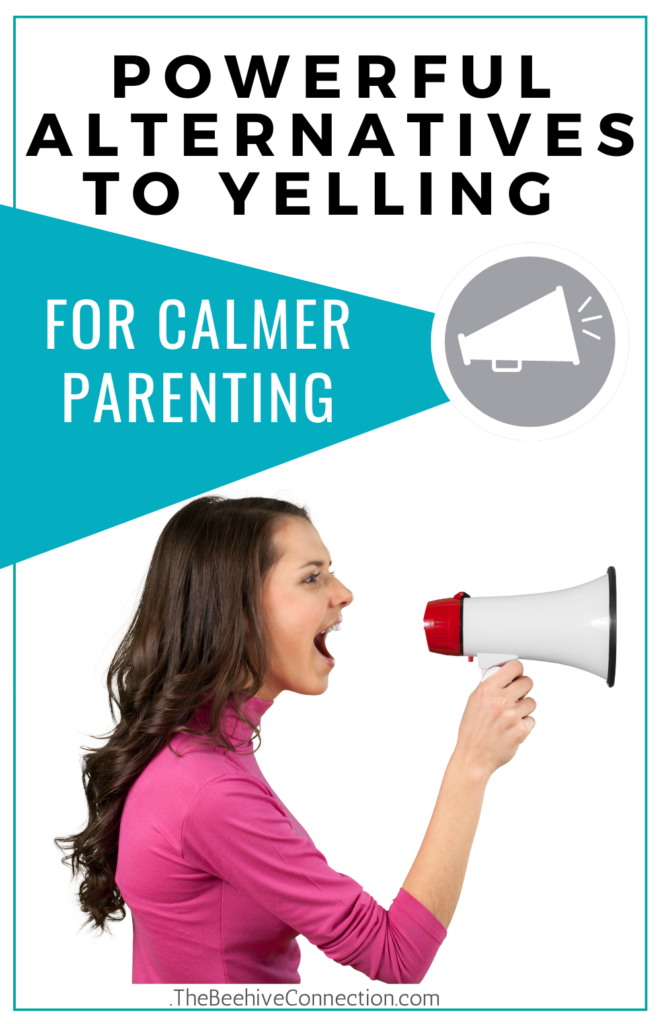
FAQs about Powerful Alternatives to Yelling
How can I be a better parent without yelling?
You can improve your parenting by using calm discipline strategies, such as talking softer, giving simple reminders and taking time to understand your child’s emotions. It also helps to practice self-awareness and manage your own emotions effectively.
Is yelling an effective form of discipline?
No, research shows that yelling is not an effective form of discipline. It often exacerbates bad behavior and creates a cycle where children become desensitized to it instead of improving their behavior.
How do you discipline without yelling?
Discipline without yelling involves using alternatives like speaking softly, setting clear boundaries, offering choices or consequences calmly, and understanding the root cause of misbehavior. This approach fosters respect rather than fear in children.
What can I replace yelling with?
Replace yelling with calm communication methods such as whispering or soft talking which grabs attention more effectively. Also use preventive measures like setting expectations early on and providing gentle reminders for better behavior.
Conclusion
Embracing Powerful Alternatives To Yelling is a game-changer in parenting.
It’s about understanding the impact of our actions on our little ones, and choosing to respond rather than react.
We’ve explored why yelling doesn’t work and how it can even exacerbate the very behaviors we’re trying to curb.
But there’s hope. By recognizing our triggers, taking a step back, and employing calmer strategies like talking softer or using simple reminders – we create change.
By recognizing our triggers and employing calmer strategies, we can foster an atmosphere of respect, understanding, and love.
If you’re ready for this transformational journey towards calmer parenting methods…
The Beehive Connection is here for you. We aim at strengthening families one moment at a time by offering practical tips that lead not only to well-behaved kids but also foster stronger family bonds. Join us as we explore more Powerful Alternatives To Yelling, together creating happier homes filled with love instead of raised voices.Your family deserves this peace!
GET FREE ACCESS TO OUR LIBRARY OF FREE PRINTABLES AND RESOURCES!
Enter Your Name and Email for FREE Access to our Library of FREE Home and Family Printables Series!
